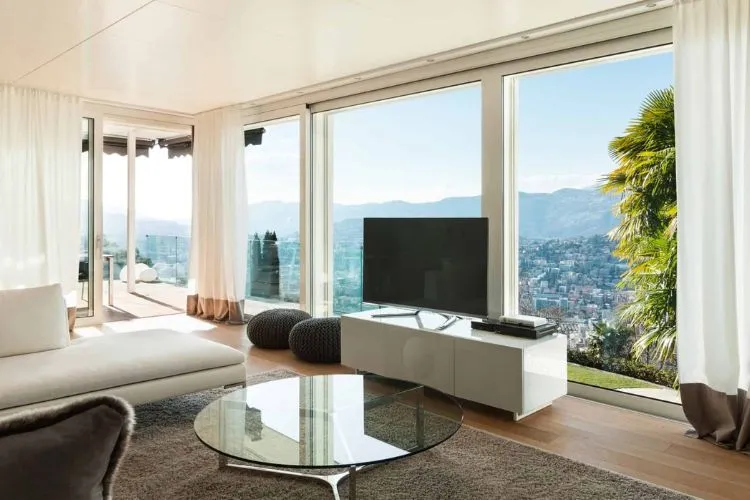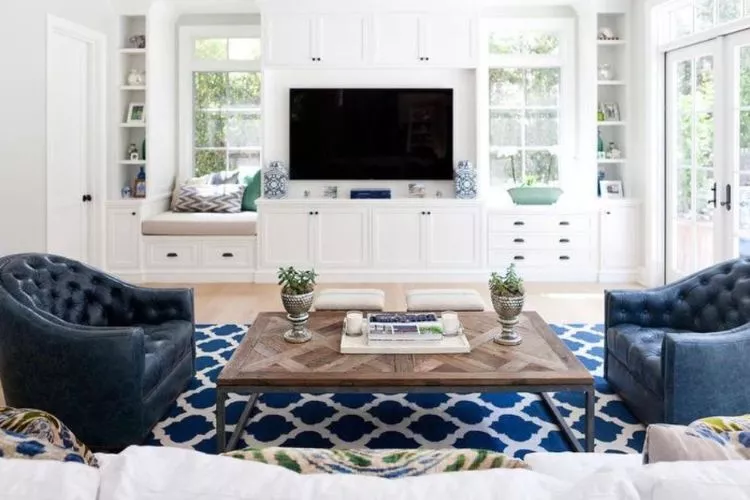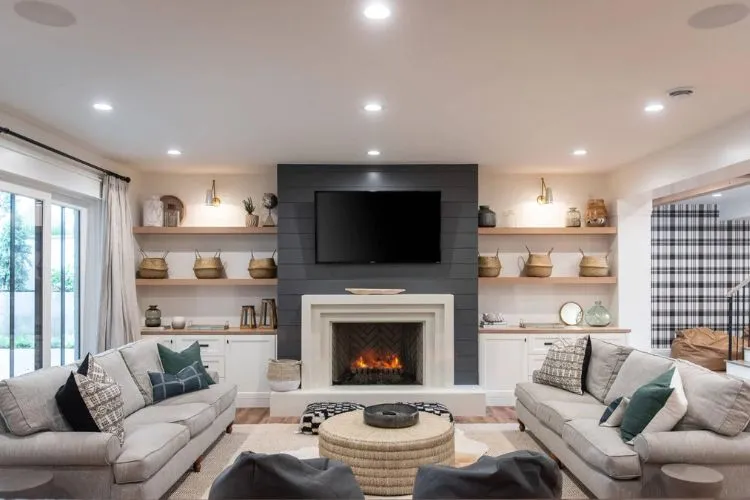In today’s era of open-concept layouts and minimalist design, it’s not uncommon to question where to place your television. One solution many consider is placing the TV in front of a window.
So, can you put a tv in front of a window?
Yes, you actually can do that. While this might seem unconventional, there are situations where this arrangement would work.
In this article, we weigh the pros and cons, delve into practical aspects, and offer alternative solutions for those searching for the optimal TV setup in their living space.

Can you put a tv in front of a window?
Yes, you can put a TV in front of a window, but there are several factors to consider before doing so. To ensure a satisfactory viewing experience and maintain the aesthetics of the room, take into account the following aspects:
- Sunlight: Glare from sunlight can make it difficult to watch TV. Position the TV so that sunlight does not fall directly on the screen and use curtains or blinds to minimize glare.
- Heat: Prolonged exposure to direct sunlight may damage the TV. Be mindful of the amount of heat exposure your TV will receive.
- Ventilation: Ensure there is sufficient clearance between the window and the TV to facilitate airflow and avoid overheating.
- Window aesthetics: Placing a TV in front of a window may obstruct the view and natural light source in the room. Consider other placement options if preserving the view is a priority.
- Safety concerns: Ensure that the TV is securely fastened to avoid any risk of it falling, particularly in windy conditions.
In conclusion, while it is possible to place a TV in front of a window, carefully consider the above factors to achieve a comfortable and functional setup.
Where to put TV in living room with windows?
In a living room with windows, ideally, place your TV opposite the windows or on a wall perpendicular to them, but not directly in front of a window as this can cause excessive glare and reflection on the screen.

Use curtains or blinds on your windows to control the amount of natural light entering the room. If it’s not possible to position your TV opposite the windows, consider using an anti-glare screen to minimize reflection.
Also remember, the TV should be at eye level when seated for the best viewing experience and comfort. Each living space is unique, so consider the layout, window positions, seating arrangements, and the time of day you watch TV most frequently when deciding on the perfect placement.
Why TV Placement Matters?
The placement of your TV plays a vital role in your viewing experience. If you are too close, the screen may overtake your field of vision, leading to eyestrain. Conversely, placing it too far could cause details to be missed.

Set the Right Height
Consider the height at which you mount your TV. If it’s too high, it could cause neck strain. The ideal height positions the middle of the TV screen at eye level when seated.
Maintain Optimal Viewing Angles
Viewing angles are vital. A direct, head-on view reduces distortion and ensures that colours appear truer, maintaining picture quality.
Considering Room Layout
The layout of your living space affects where you can place your TV. Open concept spaces provide flexibility, but controlling light might be a challenge. In smaller rooms where there are limited options, mounting your TV on a wall can offer a valuable solution.
Navigating Natural Light
Lighting is a significant factor affecting the viewing experience. Natural light from windows can cause glare on your TV screen, making it difficult to see the picture. Curtains or blinds can help deal with this issue, or try repositioning your TV to limit direct sunlight on the screen.
TV Size and Viewing Distance
The size of your TV also plays a part – the bigger the screen, the further you should be seated for the best viewing experience. The general rule of thumb is to multiply the screen size by 1.5 to find the ideal viewing distance in inches.
In conclusion, the proper placement of your TV is critical to ensure a comfortable and optimum viewing experience. Always remember that the ultimate goal is to enjoy your favourite shows, movies, and games to the fullest.
Thinking Beyond Traditional TV Placement
The traditional spot for your TV might be on a stand in the living room. But sometimes, this may not offer the best viewing comfort or make the best use of space. There are several alternative locations to position your television.

Mounted on the Wall
A popular option is mounting your TV on the wall. This not only saves floor space but also allows for optimal height adjustment. It also gives your room a clean and minimalist look.
In the Corner
Another option is locating your TV in a corner. Corner stands specially designed for this setup can be a good fit. It’s an excellent way to take advantage of unused space.
Inside a Cabinet or Enclosed Space
Consider placing your TV inside a cabinet or other enclosed space. This walk-away solution can keep your TV out of sight when not in use. However, ensure the space it is well ventilated to avoid overheating.
Above the Fireplace
Positioning your TV above the fireplace is another alternative. While it can make for a cozy arrangement, be careful of the potential heat damage. Ensure the TV isn’t at a height that will cause neck strain.
Dividing Open Spaces
In open-plan homes, large TVs or entertainment units can serve as a divider between functional spaces. This also allows multiple viewing angles, accommodating different seating areas.
In the Bedroom
Consider setting up a TV in your bedroom. A wall mount or a dresser-top stand could work. Just make sure it’s not too close to your bed to maintain a comfortable viewing distance.
Seriously think about each location and how it would work for your home setup. Remember, it’s all about enhancing the viewing comfort and experience.
Conclusion:
While it’s technically possible to place a TV in front of a window, it’s not the ideal setup due to potential glare, reflection, and visibility issues. It might also obstruct your view of the outside world.
Before making such a decision, consider alternatives like using window treatments, positioning the TV adjacent to the window or investing in an anti-glare screen.
Remember the golden rule: your TV viewing experience should be comfortable, strain-free, and visually uncompromised. Be mindful of these factors as you decide the perfect home for your TV.


